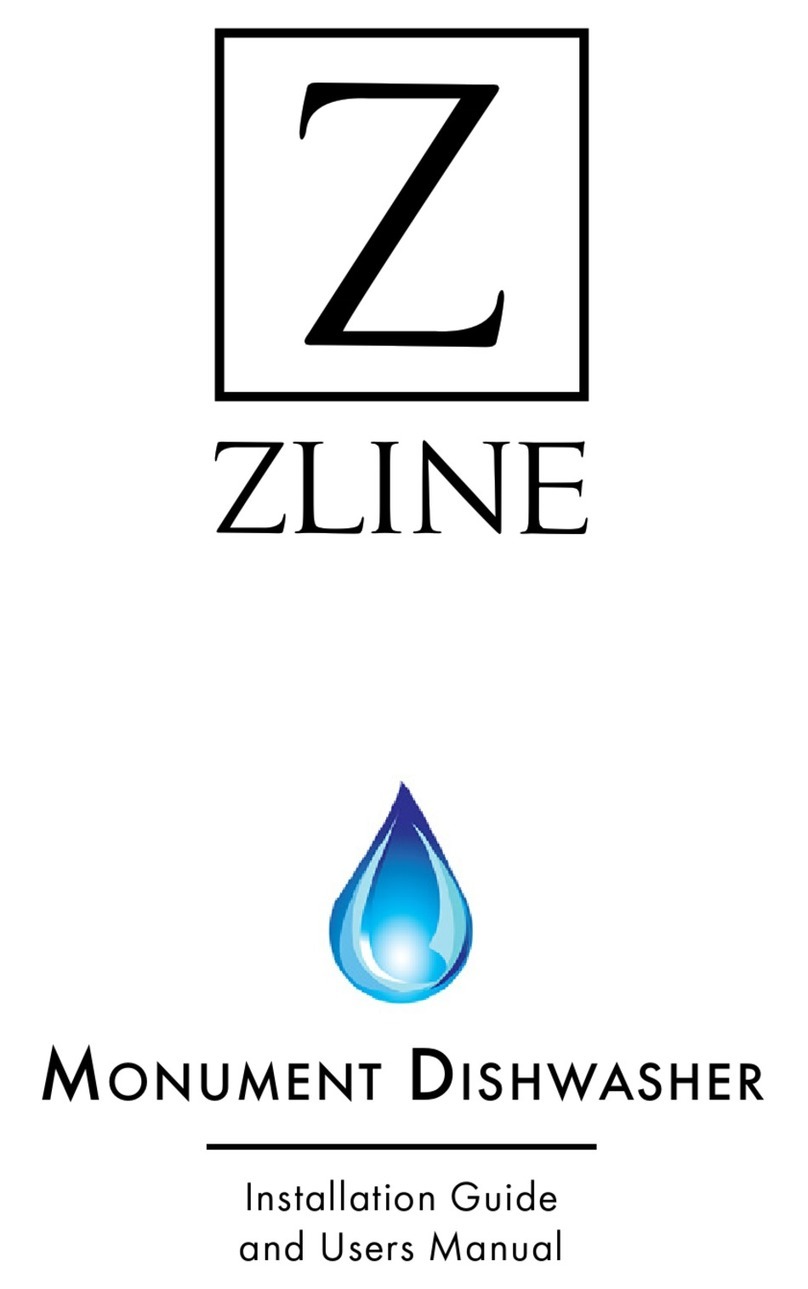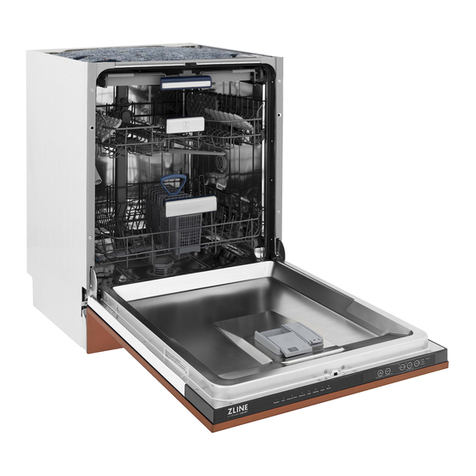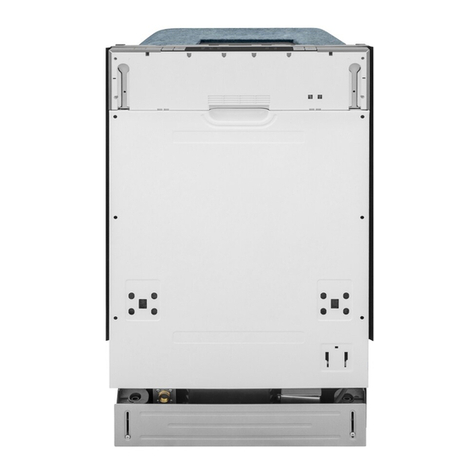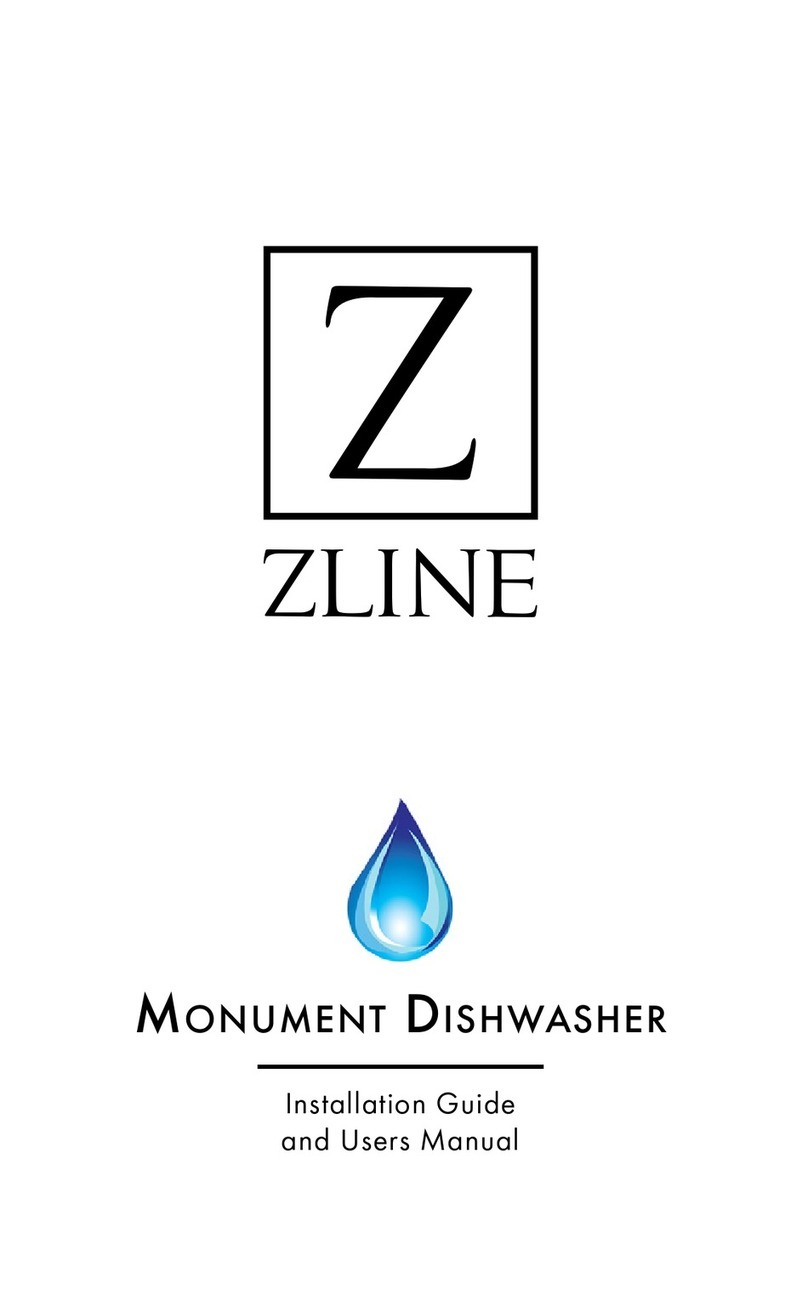
3
Basic Precautions Before Use
• Do not tamper with the control panel on the dishwasher.
• Do not operate your dishwasher unless all enclosure panels are in the proper place.
• Do not touch the heating element during or immediately after any washing,
sanitizing, or drying cycle to reduce the risk of injury.
• To reduce the risk of injury, do not allow children to play in or on a dishwasher. Keep
young children and pets away from the dishwasher when it is operating. Do not let
children abuse, sit, or stand on the door or racks of the dishwasher.
• Do not use the dishwasher if it has a damaged power line or plug. Do not plug the
dishwasher into a damaged outlet. Failure to observe these instructions may result in
electrical shock or death.
• Use only detergents or rinse agents recommended for use in a dishwasher. Keep
them out of the reach of children and away from pets.
• Some dishwasher detergents are strongly alkaline. They can be extremely dangerous
if swallowed. Avoid contact with the skin and eyes and keep children away from the
dishwasher when the door is open.
• Under certain rare conditions, hydrogen gas may be produced in a hot water system
that has not been used for two weeks or more. If the hot water system has not been
used for such a period, before using the dishwasher, turn on all hot water faucets
and let water flow from each for several minutes. This will release any accumulated
hydrogen gas. Hydrogen gas is flammable. Do not smoke or use an open flame
during this time to reduce risk of fire, injury, or death.
• Do not store or use combustible materials, gasoline, or other flammable vapors and
liquids in the vicinity of this or any other appliance.
• Remove the door to the washing compartment when removing an old dishwasher
from service or discarding it.
• This dishwasher is intended for residential use only and should not be used in
commercial establishments. This appliance is not applicable for outdoor usage. The
manufacturer disclaims responsibility for damage or injury caused by improper use
of this appliance.
For your safety, please follow the information in this manual to minimize
the risk of fire, explosion, electric shock, and to help prevent property
damage or personal injury.
WARNING
IMPORTANT SAFETY INSTRUCTIONS




































